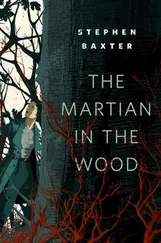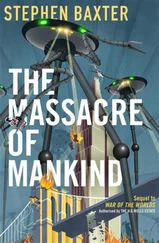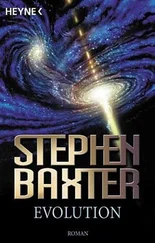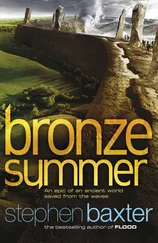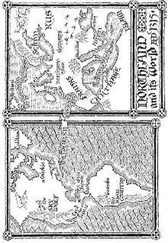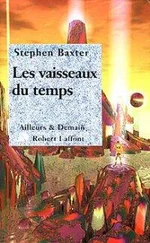When the game was done, the mood was subdued, it seemed to Ted: subdued, but somehow deepened. As if the televising of a soccer match, two scratch teams chasing a ball around a park, had moved people on a level the destruction of a city never could.
Even the news of alcohol-fuelled rioting among Glasgow fans that followed the match didn’t seem to mar the mood.
At the end of the fourth day, as the light was fading, Ted realized he hadn’t taken any air. So he walked out through the foyer, still crowded with new arrivals, and stepped into the comparatively fresh air of the patio outside.
There was a pall of smoke to the west, over whatever was going on in Edinburgh. Helicopters flitted, their lights winking brightly. Some of them appeared to be dumping water or some kind of chemicals into the continuing inferno; others were dropping crates of supplies under blossoming parachute canopies to the pockets of survivors that remained. The small human activity, probing and challenging the work of the Moonseed, warmed Ted’s heart.
Somehow, watching that, he found it easier to believe that Michael might yet have lived through all of that.
He found a purpose, coalescing within him. He had to return. I’ll go in for Michael. And if I don’t find my son, maybe I’ll find the arsehole who lured him in there. Then we’ll see.
He told Jane what he planned.
“What? That’s ridiculous.”
“But if it was Jack—”
“I’d go. I’d go without hesitation.”
And above their heads, the ash and smoke and steam merged into one hell of a sunset, a curtain of flame that reached to the police-blue zenith.
The Rest Centre was actually quieter that night. Many people had found billets, or had been allowed to leave to find accommodation in hotels, or with relatives.
Sleep again came easily to Ted. But he was woken at 3.00 a.m., by yelling voices.
A middle-aged man — still dressed in the rumpled suit in which he’d arrived at the Rest Centre yesterday, straight from his job as lawyer or bank manager or accountant — had strangled that yapping Alsatian with his bare hands.
The journey into Tokyo was an ordeal for Declan Hague.
May was the season for the school children to be taken in parties to the nation’s show places. Venus and the volcano ash hadn’t put a stop to that, and they seemed to be everywhere: on the trains and the stations and the streets, with their mobile phones and their laughing faces and their fashionable rad-gear and their electronic toys. And everywhere he went, they seemed to home in on him.
Well, he could understand why. He was a combination of two rarities for these kids: a gaijin — a foreigner — and a monk. Here they came in little groups of three or four, boys and girls alike in their ankle socks and navy or black uniforms and ties, grinning and giggling and holding up their disposable cameras.
The kids pursued most of the few gaijin on Tokyo’s crowded streets. But he thought there was more to it than that. About him, they probably sensed weakness, on some subliminal level.
Weakness. Fear.
Or even a whiff of danger.
After all, it was because of children younger than these teenagers that he had been forced to leave Ireland, leave the Church, and come all the way around the world to this place, to immerse himself in the placidity of another religion.
But he got through the day somehow, smiling and nodding and waving away their requests for photographs. And besides, his determination to complete the mission he had set himself would carry him through.
He walked the mile or so south from the Tokyo JR station to Ginza, the most famous entertainment and shopping district in Japan — so he had been told; he’d never been here before. What he found was an oddly American-flavoured district of glittering, high-rise buildings laid out on a rectangular street pattern, neon signs bright enough to dazzle even by day.
Everywhere was crowded, of course, but without the sense of crush and bustle he’d grown up with in Dublin, even London; that, of course, was because of the Japanese habit of politeness and deference, all that smiling and bowing that had seemed so odd to him at first, but which now he understood as a vital social lubricant, the only way so many people could get along on this cramped little island chain.
Politeness and deference — from everyone except the school kids, attracted endlessly by the gaijin mask he could never take off.
And it was in Ginza — in a small (but expensive) shop near the Sony Building — that he found what he was looking for.
In amongst the trashy Buddhist charms and plastic fans and pictures of twelve-year-old pop stars, there was row on row of vials of ash-grey dust: rock from Edinburgh. Each vial, he found, came with a certificate of authenticity from some geology institute he’d never heard of, and a list of the uses to which people were putting this stuff. Scattering it over their Zen gardens. Putting it in their Shinto shrines. Even mixing it with milk and drinking it.
For this anonymous-looking volcanic ash had been — if the stories were true, if the ash were genuine — transformed by the ghostly touch of the Moon itself.
Declan bought three vials. Then he turned and, without hesitation, made his way back to the JR station.
Home for Declan, for the last decade, had been a small Shinto shrine called Futaarasan, which stood on the north bank of Lake Chuzenji, some hundred miles north of Tokyo. Now he retraced his journey to Futaarasan, taking the Shinkansen bullet train from the capital to Nikko, and the bus to Chuzenji.
At last, cradling his vials, Declan made his patient way back along the lake’s north shore road towards the shrine.
Chuzenji was once, probably, an attractive area, he thought. But the town had become a trashy resort, feeding off the cable-car that took visitors down the river gorge to see the Kegon Waterfall. Through the trees that lined the lake, he could see pleasure boats made absurdly in the shape of swans, Disney-style, plying back and forth.
If they had done this to a site in Britain or Ireland, he thought, everybody would have said it was a typical desecration. But the Japanese were, maybe, a little more mellow. This was a culture where monks would quietly earn a living from charging for entry to their temples and shrines — even for services — as well as rake off hundreds of yen apiece for ridiculous little charms, like something out of the Middle Ages.
With relief, he returned to the shrine itself.
The shrine was modest. Its main buildings — vermilion-painted wood topped with blue tiles — were grouped around a central square. Facing the lake was the haidin, the hall of worship, and on either side were the honden, the main hall, and the homotsu-kan, the treasure house. Declan hurried through the square to the torii gate which stood at its rear, a plain affair of grey wood, two uprights topped by two cross-pieces. Beyond the torii stood a narrow vermilion archway, and behind this a steep flight of steps soared up the hillside.
Declan paused a moment to gather his strength; he still felt exhausted from his unwelcome encounter with Tokyo. But he set his sandalled feet on the first of the steps, and began the familiar climb.
Futaarasan Shrine nestled at the feet of Mount Nantai, a green-clad volcanic cone which rose above it, reaching all of a mile and a half above sea level. Futaara was actually an old name for the cone, and the true centre of the Shrine was set at the lip of the caldera at the summit. Each August pilgrims would come this way, through the old torn gate, leaving behind the absurd world of charms and plastic swans and tourists, and climb up here to the violent, quiescent heart of the volcano, just as Declan now climbed, alone.
Читать дальше
Конец ознакомительного отрывка
Купить книгу

